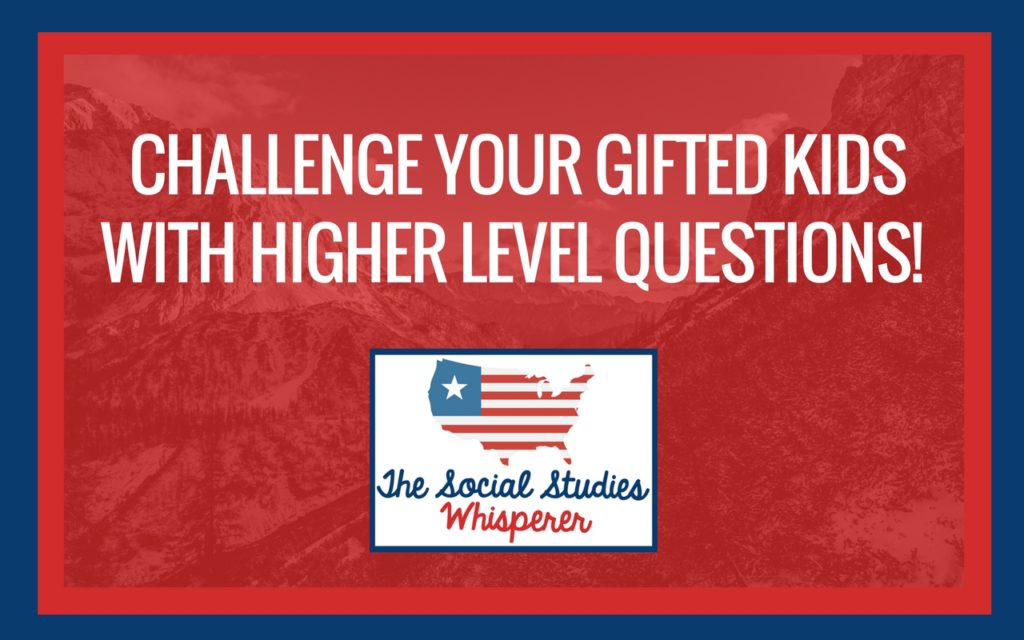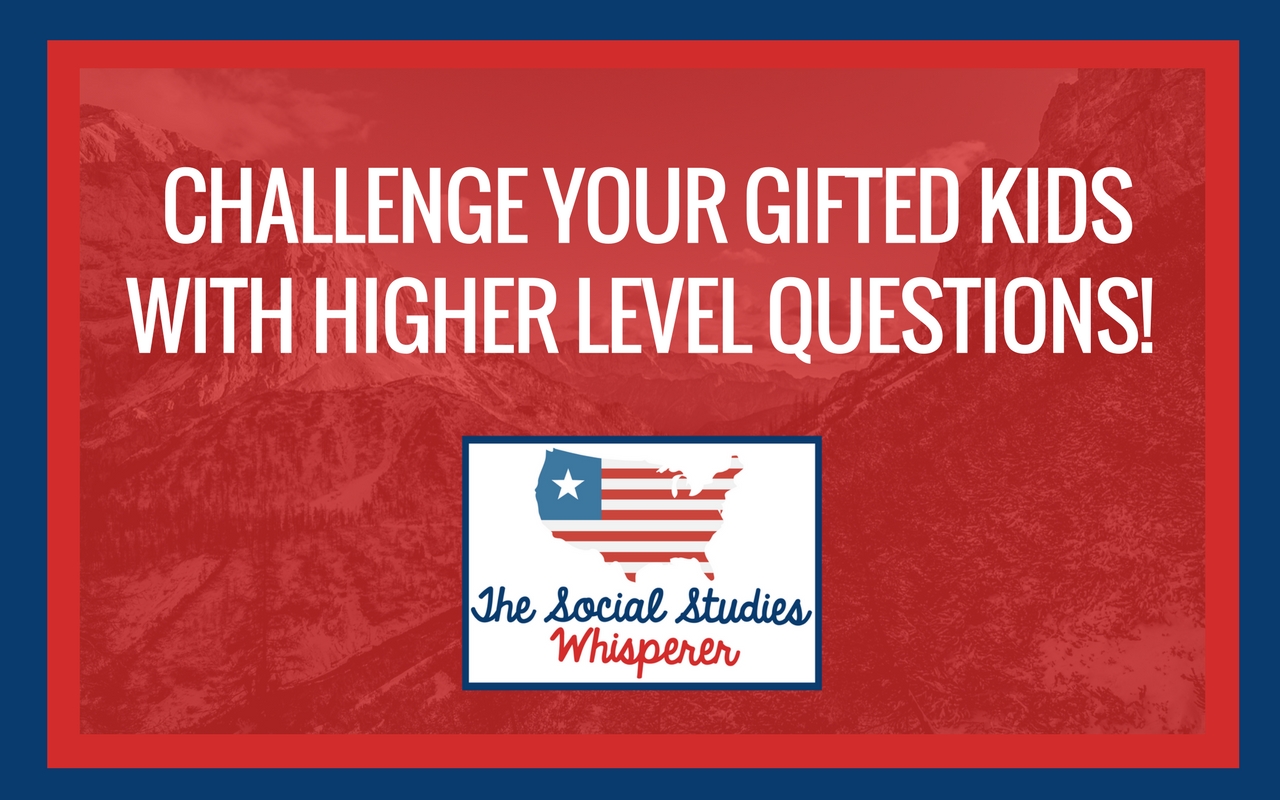
I thought I would kill two birds with one stone and combine a blog post with an assignment for my Gifted Endorsement class (since it’s super late and we have class tomorrow)! Let’s talk about making sure our questions during Social Studies instruction are challenging enough.
It’s common knowledge I am passionate about teaching Social Studies. I also have a vested interest in differentiating instruction to meet the needs of all children. I’ve been successfully adapting activities to meet the needs of my English Language Learners for years. At the end of last year, I did some reflecting about my higher students. Had I been meeting their needs? I think up until now maybe I haven’t helped them soar. This was part of my motivation for taking the Gifted Endorsement coursework this year. I also wanted to better meet the needs of my unidentified gifted ELLs. More on that another night! I think it’s a common misconception that “Oh that child is higher level so they will get it automatically. I need to spend most of my time with my struggling learners.” Something I’m working on this year is trying harder to challenge my gifted and talented students. They can show growth, too!
It seems easier to me to modify lessons for gifted learners in Math or Language Arts. Science lends itself to STEM projects. What about addressing your higher-level students in Social Studies though? Well, the starting point would be with questioning. Helping develop critical thinking skills is a critical part of SS instruction. Bloom’s Taxonomy is practically Day 1 of “How to be Teacher 101” in college and it still is an effective planning tool. Questions are sequenced from concrete to very abstract. Our higher-level students should be drawing conclusions, formulating cause and effect relationships, and synthesizing information in Social Studies not just recalling basic facts. These skills are found near the top of the Bloom’s pyramid.
It is also important to factor in Depth of Knowledge (DOK), because this is a more fluid system of questioning. There are four Depth of Knowledge levels. In elementary school, we focus on the first three. Assessments for 5th grade Social Studies often contain many DOK 2 and 3 questions. Our gifted students especially should be exposed to lots of higher level questions in class since it is likely they could be successful on those standardized tests.
First start by deconstructing your standard. I chose one involving the Civil War. The standard reads, 30a – identify ‘Uncle Tom’s Cabin’ and John Brown’s raid on Harper’s Ferry and explain how each of these events was related to the Civil War. As you can see, this has a very basic Knowledge Target standard. Our higher-level students need more of a challenge than just recalling who John Brown was or know that Uncle Tom’s Cabin was a book. At first, I came up with this question, “Do you think John Brown’s method was effective? Why or why not?” I realized this isn’t requiring students to do any comparing and contrasting. So after a discussion in my Gifted Endorsement class, I revised it to, “Which abolitionist was the most effective and why?” This is a more open-ended question.
We talked that night about the “Could, Should, Want to?” approach to planning our questions. When modifying standards to meet the needs of gifted learners, think about whether or not other students, “could answer it,” “should be able to answer it,” “and finally “would they want to.” If your question doesn’t fit the criteria, it’s not challenging enough. Gifted learners are easily bored and when teachers constantly ask closed questions (especially yes or no) students lose interest. You can probably hear an audible groan! Gifted students are naturally curious and prefer to take a different approach with out-of-the box thinking.
I plan to formulate questions which allow for more discussion between students. I don’t know about you, but many gifted students I know love to express themselves verbally so the more permitted verbal discourse the better! I recently posted a question online for students involving William T. Sherman. They had to explain whether or not they thought his March to the Sea was fair or too harsh and why. This also allows them to make connections since we live near Atlanta. Relating content to their own lives can be challenging to 5th graders.
This week ends our first grading period. As I collaborate with my team for the 2nd 9 Weeks, I will be analyzing our curriculum standards to see how I can make adaptations for my gifted students. It is important to be purposeful when planning questions. I know if I am in the middle of a lesson, my questions might be simple rote memorization type-stuff. It is a good idea to prepare your higher-level questions in advance. I plan to include them along with my Learning Targets on my lesson plans for the next term. I think a unique way to use them is in the form of an exit slip instead of just asking these questions in class and only calling on our “FOCUS” students since I only have a few in each of my three classes. That could get a little tedious for them and not an effective use of time for the other children. Having differentiated exit slips or interactive notebook quick write prompts would be an easy way to make sure your higher-level students are challenged!

I really like your newly designed blog!